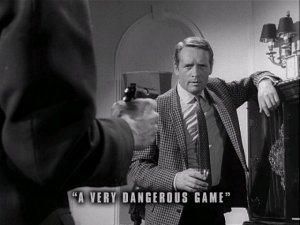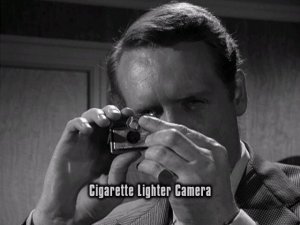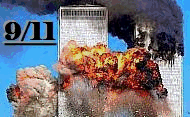 webradio
webradio (deutsch)
(deutsch) michael moore
michael moore  Mondlandungs Lüge
Mondlandungs Lüge (deutsch)
(deutsch)

 Tages-Anzeiger online
Tages-Anzeiger online

|
marcosolo, 14. Oktober 2003 um 18:00:59 MESZ
October 14, 2003 - THE MURDER OF DAVID KELLY - Part one of two (This first part lays out the case from the evidence presented in the Hutton inquiry why the death of Dr. David Kelly was not by suicide. Part two will show the reasons, in this writer's opinion, Dr. Kelly was killed.) On Thursday, July 17th sometime between 3 and 3:30pm, Dr. David Kelly started out on his usual afternoon walk. About 18 hours later, searchers found his body, left wrist slit, in a secluded lane on Harrowdown Hill. Kelly, the U.K.'s premier microbiologist, was in the center of a political maelstrom having been identified as the "leak" in information about the "dossier" Prime Minister Tony Blair had used to justify the war against Iraq. While the Hutton inquiry appears set to declare Kelly's death a suicide and the national media are already treating it as a given, there are numerous red flags raised in the testimony and evidence at the inquiry itself. Kelly's body was likely moved from where he died to the site where two search volunteers with a search dog found it. The body was propped up against a tree according to the testimony of both volunteers. The volunteers reported the find to police headquarters, Thames Valley Police (TVP) and then left the scene. On their way back to their car, they met three "police" officers, one of them named Detective Constable Graham Peter Coe. Coe and his men were alone at the site for 25-30 minutes before the first police actually assigned to search the area arrived (Police Constables Sawyer and Franklin) and took charge of the scene from Coe. They found the body flat on its back a short distance from the tree, as did all subsequent witnesses. A logical explanation is that Dr. Kelly died at a different site and the body was transported to the place it was found. This is buttressed by the medical findings of livor mortis (post mortem lividity), which indicates that Kelly died on his back, or at least was moved to that position shortly after his death. Propping the body against the tree was a mistake that had to be rectified. The search dog and its handler must have interrupted whoever was assigned to go back and move the body to its back before it was done. After the volunteers left the scene the body was moved to its back while DC Coe was at the scene. Five witnesses said in their testimony that two men accompanied Coe. Yet, in his testimony, Coe maintained there was only one other beside himself. He was not questioned about the discrepancy. Researchers, including this writer, assume the presence of the "third man" could not be satisfactorily explained and so was being denied. Additionally, Coe's explanation of why he was in the area is unsubstantiated. To the contrary, when PC Franklin was asked if Coe was part of the search team he responded, "No. He was at the scene. I had no idea what he was doing there or why he was there. He was just at the scene when PC Sawyer and I arrived." Franklin was responsible for coordinating the search with the chief investigating officer and then turning it over to Sawyer to assemble the search team and take them to the assigned area. They were just starting to leave the station (about 9am on the 18th) to be the first search team on the ground (excepting the volunteers with the search dog) when they got word the body had been found. A second red flag is the nature of the wounds on Kelly's wrist. Dr. Nicholas Hunt, who performed the autopsy, testified there were several superficial "scratches" or cuts on the wrist and one deep wound that severed the ulnar artery but not the radial artery. The fact that the ulnar artery was severed, but not the radial artery, strongly suggests that the knife wound was inflicted drawing the blade from the inside of the wrist (the little finger side closest to the body) to the outside where the radial artery is located much closer to the surface of the skin than is the ulnar artery. For those familiar with first aid, the radial artery is the one used to determine the pulse rate. Just hold your left arm out with the palm up and see how difficult it would be to slash across the wrist avoiding the radial artery while severing the ulnar artery. However, a second person situated to the left of Kelly who held or picked up the arm and slashed across the wrist would start on the inside of the wrist severing the ulnar artery first. A reasonably competent medical examiner or forensic pathologist would certainly be able to determine in which direction the knife was drawn across the wrist. That question was never asked nor the answer volunteered. In fact, a complete autopsy report would state in which direction the wounds were inflicted. The coroner's inquest was never completed as it was preempted by the Hutton inquiry and the autopsy report will not be made public. Neither will the toxicology report. Two paramedics who arrived by ambulance at the same time as Franklin and Sawyer (some time after 9am) and accompanied them to where the body was located. After checking the eyes and signs of a pulse or breathing, they attached four electro-cardiogram pads to Kelly's chest and hooked them up to a portable electro-cardiograph. When no signs of heart activity were found they unofficially confirmed death. One paramedic (Vanessa Hunt) said the Police asked them to leave the pads on the body. The other paramedic (David Bartlett) said they always left the pads on the body. Both paramedics testified that DC Coe had two men with him. Curiously, both also volunteered that there was a surprisingly small amount of blood at the scene for an artery having been severed. When the forensic pathologist (Dr. Nicholas Hunt) who performed the autopsy testified, he described copious amounts of blood at the scene. He also described scratches and bruises that Kelly "stumbling around" in the heavy underbrush may have caused. He said there was no indication of a struggle or Kelly having been forcibly restrained. However, the police made an extensive search of the area and found no indication of anyone, including Kelly, having been in the heavy underbrush. Strangely, none of the witnesses mentioned anything about rigor mortis (stiffening of the body) which is useful in setting the approximate time of death. Even Dr. Hunt, when was asked directly what changes on the body he observed that would have happened after death, failed to mention rigor mortis. He only named livor mortis. Hunt set the time of death within a range of 4:15pm on the 17th to 1:15am the next morning. He based the estimate on body temperature which he did not take until 7:15pm on the 18th, some seven hours after he arrived on the scene. A forensic biologist (Roy James Green) had been asked to examine the scene. He said the amount of blood he saw was consistent with a severed artery. Green works for the same private company (Forensic Alliance) as Dr. Hunt. A majority of the company's work is done for police organizations. The afternoon of the 18th DC Coe turned up at the Kelly residence accompanied by a man identified only as "an attachment," who acted as an "exhibits officer" presumably collecting documents in behalf of some other government agency. Detective Constable Coe and those accompanying him are somewhat of a mystery. There are no corroborating witnesses to any of his actions to which he testified (other than "just being there" at the scene where the body was found). However, on a listing of evidence provided to the Hutton inquiry by Thames Valley Police is a reference to a document described thusly, "TVP Tactical Support Major Incident Policy Book…Between 1430 17.07.03 and 930 18.07.03. DCI Alan Young. It is labeled "not for release – Police operational information." Many of the exhibits are labeled that way or are not to be released as personal information. The police took over 300 statements from witnesses but less than 70 were forwarded to the Hutton inquiry. Witness statements were not to be released (even to the inquiry) unless the witness signed an authorization permitting it. TVP also withheld witness interviews they did not consider "relevant" to the inquiry. Witnesses were not put under oath so it is impossible for the public to know if their public statements are at variance with what they told police. The ‘tactical support" document must have been considered relevant to the inquiry on Kelly's death or it wouldn't have been forwarded. So this "tactical support" began at 2:30pm on the 17th, about one hour before Dr. Kelly left the house on his final walk. It ended at 9:30am the following morning about the time DC Coe and his men left the death scene. The obvious question is, to what was TVP giving tactical support? The name given the effort was "Operation Mason." (In part two of this report, we will lay out some of the reasons (that you won't see in the national media) Dr. Kelly could not be allowed to live.) (In accordance with Title 17 U.S.C. Section 107, this material is distributed without profit to those who have expressed a prior interest in receiving the included information for research and educational purposes.) Permission is granted to reproduce this article in its entirety . The author is a freelance writer based in Romulus, Michigan. He is a former newspaper editor and investigative reporter, a retired customs administrator and accountant, and a student of history and the U.S. Constitution. If you would like to receive Medium Rare articles directly, please contact the author at jimrarey@comcast.net ... Link marcosolo, 4. Oktober 2003 um 00:15:02 MESZ Our Place in the World: Bush & Co. don't want to be questioned By THOMAS E. HAUBER GUEST COLUMNIST Has American journalism ever been so anemic? So docile? So unwilling to exercise its duties and responsibilities? One can make a strong case, in view of the tools and vast resources at its disposal, that, save for a distinguished and relative few, the nation's reporters and editors are suffering from a collective ennui, or perhaps simply shell shock. Who -- and what -- to blame? The apparent anomie of the U.S. electorate toward the ruses perpetrated and lies told by the administration? The dumbing down of just about everything in print and broadcast media? The gradual usurpation of culture by pervasive, relentless, omnipresent advertising and marketing? All of these, of course. But that's an incomplete answer. The monstrous attacks of 9/11 so stunned the national psyche that its frame of reference was shattered. On that day, the country divided into two opposing camps: one bellicose and belligerent, calling for blood, the other bewildered and beset with the Who? How? Why? Presidential rhetoric, when not scripted ("Bring 'em on!") frequently defaults to the former, positing a world of good guys and bad guys -- those with us, all the others against us. Through the White House lens, this ever more complex world, which demands of us ever increasing powers of discrimination and reason, is simply a biblical tableau of good versus evil. Is this a valid simplification or fuzzy-minded thinking? Thinking is difficult: It encourages doubt, undermines certainty and creates the discomfort that possibly our leaders don't know as much as we think they do. Why does an Arab kid sign on to fly a jet into a skyscraper? Because he's Muslim? Misled? Poor? Ignorant? Evil? Because the United States does a poor job of articulating its foreign policies? Because the United States lies to the world about the motives for a pre-emptive war? It is vexing to weigh multiple factors of humanity, different cultures or religions and what might be happening in another part of the world or even in the next block. It's much easier for the wagon master to circle the wagons, hand out rifles and warn that the bad guys are coming for our families. This summer, when asked about the continued deadly resistance to U.S. troops occupying Iraq, President Bush uttered what may be the most ill-considered and self-demeaning words of his administration. Rather than use his office to reaffirm U.S. resolve to transform Iraq into a stable society, and speak words that would play well on the Arab Street, he taunted Iraq's shadowy killers. "Bring 'em on!" said the reservist from Crawford, Texas. How much better the United States would have been served had the president noted that the majority of Iraqis are working for order, that turmoil springs from holdouts from Saddam's regime and terrorists from other countries answering the president's own taunts. But no. Keep shooting at us, said the president, and they have, forgetting that he is not one of "us," not a Marine on patrol, or an unarmed U.N. envoy, but rather a pampered head of state protected by the tightest and most formidable security apparatus in the world. His taunt to the assassins in Iraq is the worst and most dangerous kind of demagoguery possible from a head of state. Now he goes before the United Nations, calling for its courage to enforce the "peace" in Iraq, threatening the United Nations with irrelevancy if it does not send its soldiers to fight and die for the mess he has created. The ruse continues. No WMDs, no Iraqi connection to 9/11? The world is a safer place now? At the United Nations, Bush calls for a non-proliferation of nuclear weapons, while the Department of Defense explores the next generation of same. He boasts of saving the world from disease, slavery and child pornography, while his own country faces domestic bankruptcy. A bumper sticker -- published in Texas -- reads: "Think -- it's patriotic." Thinking, however, seems to be the last thing that this administration wants us to do. Most Americans respect authority, they yearn for unimpeachable motives in their leaders. A president's motives are generally considered worthy until proven otherwise. U.S. journalists, charged with the duty to question authority figures, do so in front of citizens who are traditionally inclined to give their national leaders the benefit of the doubt. There is plenty of room for doubt. The administration knows this well; previously satisfied with slogans and photo-ops, they backtrack and cry for help. Will U.S. journalists lead us in this important debate or be content to cheerlead and market their journalism, as does cable TV? The consequences of journalistic timidity in the face of the bully pulpit could lead us down a very tragic road. Thomas E. Hauber lives in Poulsbo. Submissions for Our Place in the World, of up to 600 words, can be e-mailed to editpage@seattlepi.com; faxed to 206-448-8184 or mailed to the Seattle Post-Intelligencer, P.O. Box 1909, Seattle, WA 98111-1909. ... Link marcosolo, 21. April 2003 um 11:17:36 MESZ Did A 1965 TV Show Foretell Peak Oil? Was it just a writer's fantasy? Or did they know something... 
April 20, 2003, 2100 PDT (FTW) – In the episode "Yesterday's Enemies" of the TV spy thriller Secret Agent (Danger Man) starring Patrick McGoohan, is incredible dialogue regarding the end of the age of oil. The words could have been penned by Michael Ruppert himself...except that this show first aired in the U.S. on 15 May 1965! The writer was Donald Johnson, the director was Charles Crichton. I wonder if they are still around? It would be fascinating to know how they came about that piece of data. MP3 - Audio Only Secret Agent - audio clip (81K)Show: Secret Agent (Danger Man) Episode: Yesterday's Enemies Starring: Patrick McGoohan Written by: Donald Johnson Directed by: Charles Crichton First U.S. Broadcast: 15 May 1965 © ITC Incorporated Television Company Ltd. 1964-1965. Distributed by A&E: AandE.com Also check out the fantastic TV series, "The Prisoner", also starring McGoohan. (Back in the days when television series actually had plots...) Secret Agent aka Danger Man, Sets 4 & 5 (1965)
Review by ScottC
Film: 
features: Photo gallery Alternate American opening McGoohan biography & filmography 2-disc sets, 4 episodes per disc Anamorphic: N/A; presented in its original 1.33:1 format. My Advice: Rent them. Once again we enter the shadowy world of Cold War espionage with John Drake (McGoohan) in the spy series Danger Man. As in the previous sets, Drake is sent around the world to track down dangerous assassins and renegade spies, protect Her Majesty’s secrets from those who would use them against her, and fixing situations when they threaten lives and even whole nations. All he uses is his intelligence, charm, and maybe a gadget or two. And he does it without causing massive explosions, falling into bed with slutty women, or listening to a villain’s ponderous exposition. After watching more episodes, it’s the grayness of the covert conflict that makes this show interesting, since most shows and countries during this time (as there are now) were portraying the battles between East and West as black and white, us vs. them. In “Parallel Lines Sometimes Meet“, Drake forms a friendly but competitive relationship with a Russian agent investigating missing scientists. But in “To Our Best Friend “, Drake has to work with a British assassin who tucks into breakfast while calmly discussing “eliminating” a possible traitor. Good and evil are labels that don’t apply in intelligence work. The best example of this was the episode “Judgment Day”. Drake is told to bring a Dr. Garriga to England from Saudi Arabia. The problems start with Garriga being armed and very paranoid while Drake keeps hitting roadblocks getting out of the country. He finds the cause when the airplane he and his charge are in crashes in the desert and they are intercepted by a rogue Israeli Nazi hunting party. They say Garriga is a Nazi scientist responsible for the deaths of dozens of Jews in the name of “science”. But instead of delivering him to The Hague or Tel Aviv, the group is going to execute him and leave him in the desolate wastes. Partly to buy time for the pilot to radio the authorities, but mainly because of his principles, Drake argues that their deciding Garriga must die without due process makes them just as bad as the Nazis. Garriga pipes in saying the Jews died testing the effectiveness of bacterial weaponry and its antidotes. His research could help the West and that’s why Drake in bringing him in. In the end, Garriga is shot, but no one gets the moral high ground. That sort of complexity is rarely seen on TV now, never mind the mid 60s. Still, the show still has some of the idealism of the period. In both “The Mercenaries” and “Someone is Liable to Get Hurt”, Drake assists threatened foreign governments that are democratic is nature, when the reality was that the West was more likely to support any thug on a general’s uniform if he was against communism. And the various characters he works with or against tend to be a bit too over the top to be taken seriously. I can’t if this is due to the actors or the writing. 
The DVD features are the same as they were in the previous sets: a filmography and biography of McGoohan, a picture gallery from the episodes, and the alternate U.S. opening. Not much in quality or quantity, but the episodes of Danger Man are worth viewing. So when you’re ready, give them a rental ... Link |
online for 8435 Days
last updated: 15.12.12, 03:58  Youre not logged in ... Login

  |
||||||||||||||||||||||||||||||||||||||||||||||||||||||||||||||||||

View My Guestbook
Sign My Guestbook




marcosolo's 
|
marcosolo  webradio statistics webradio statistics |
Nord- Motorrad-trips in Nord Thailand Motorrad-trips in Nord Thailand
|











